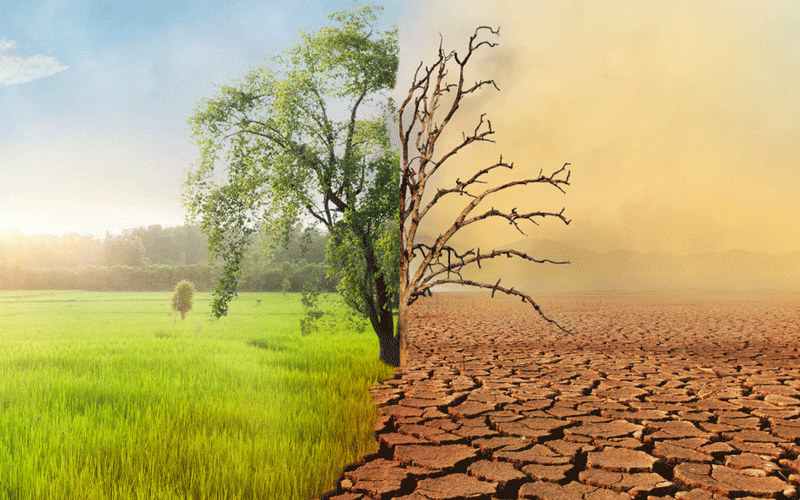
BY PETER MAKWANYA
RIVERS are a marvel to watch when they are in a state of perennial flow, snaking through mountains and forests in patterns that only nature can figure out.
Their aerial view strikes as they weave and criss-cross each other, showcasing the creator’s craftsmanship, with their holding capacity unaltered and ready to support multiples of species and ecosystems.
Rivers’ support of community livelihoods since time immemorial by providing the precious liquid that is central to human survival is indispensable. One wonders why human activities are in conflict with nature’s magnificent gift making rivers dry, adulterated or rendering them extinct.
Many rivers in Zimbabwe have borne the brunt of the human careless hand and activities through gold panning, stream bank cultivation and pollution over the years, making it difficult for them to play their usual role of biodiversity conservation. Around the world, rivers have controlled the way people live and settle. In Zimbabwe, towns and cities are named after rivers near them, Kwekwe, Gweru, Mutare are good examples.
Even many rural communities and settlements derive then names from streams and rivers around them, Ngezi, Muzvezve, Mtshabezi, UMzingwane, Mbembesi, Munyati, Dete, Tokwe, Shashe, Gwaai, Shangani, Musengezi, Save, Ngondoma, Zambezi, Runde, Mwenezi, Sengwa, Hunyani, Lutope, Sasame, Mupfure, Ruya, just to name a few. It is also not a coincidence that most of these rivers identified are also names of schools in Zimbabwe.
Agricultural activities and artisanal mining have become huge drivers of the siltation of rivers in Zimbabwe. The crave for rich alluvial soils near streams and rivers for agriculture has contributed heavily to siltation, thereby reducing the rivers’ holding capacities.
Uncontrolled artisanal mining has destroyed rivers around the country. Many streams and rivers have been deformed and degraded in search of alluvial gold. Regrettably, no efforts have been made to rehabilitate the streams and rivers to their former holding capacities, be it at community or national level.
- Chamisa under fire over US$120K donation
- Mavhunga puts DeMbare into Chibuku quarterfinals
- Pension funds bet on Cabora Bassa oilfields
- Councils defy govt fire tender directive
Keep Reading
Right now, as Zimbabwe receives large amounts of rainfall, this would have been the best opportunity for the streams and rivers to be restored their water holding capacities. Due to the damaged potential, resulting in sedimentation, siltation and destruction of the riverine ecosystems, their current overflowing only serve to deceive for a while before they are dry again.
This has become a perennial but temporary relief that has threatened water security of the country for a long time. Each year, many of Zimbabwe’s dams have always recorded full capacity, but that water does not last longer. This is actually a cause for national panic and concern, hence Zimbabweans need to take the painful and expensive route to restore these rivers to their former selves.
Due to the shallowness of these streams and rivers, they can no longer contain extreme flooding, which has become a cancer in Zimbabwe. Although river restorations have many challenges, it is the only way to go in order to realise long-term benefits from the rivers.
Pilot restoration projects could start with streams, at a small scale graduating to river rehabilitations. The potential of rivers and streams to link people, animal species and the environment has been severely undermined.
The shallowness of streams and rivers means that they cannot support a wide range of aquatic plants, fish, fresh water for people, livestock and wild animals.
This will result in a conflict between people and animals. Rivers have a special placement in the lives of local communities, culturally, religiously and economically. Spirits and mermaids are believed to be domiciled in streams and rivers, hence water is always available on those spots where mermaids are presumed to be living. These places are considered sacred and local communities respect them.
Despite the scourge of artisanal mining and pollution, where industrial toxins and wastes are deposited into the streams and rivers, sand mining, deforestation and degradation are contributing to rivers destruction.
Empowering knowledge, education and awareness to capacitate communities with information on the demerits of human activities on streams and rivers is essentially lacking. There is need for effective communication to arrest negative attitudes and behaviours in order to keep the environment and generations safe.
Strong legal instruments which would see people reduce destructive behaviours in these lifelines are required. This will be important in strengthening the socio-cultural, economic and livelihood importance of the rivers. The factoring in and placement of the streams and rivers into the country’s conservational laws should not be mere window dressing and lip service. Rivers should be protected in the same manner as endangered species because they are now in danger more than never before.
Floodplains and wetlands are also significant in the lives and statuses of the rivers, hence they should not be tampered with at all costs. In this regard, the links between organisms, communities and the environment should enhance the overall complexion of rivers’ significance. There is a symbiotic relationship of organisms in the complex biodiversity matrix.
The role of effective and empowering communication should be harnessed in its entirety so that retrogressive behaviours are exposed and shamed. These communication activities should cut across politics of the day, beliefs, behavioural practices and attitudes, given the amount of benefits realised in doing this. The private companies which are normally guilt of polluting rivers in order to realise profits should give back to the community by funding river restorations.
Heavily silted streams and rivers need to have the sediments removed and fragile walls fortified with stones and communities can do this without seeking funding to do so. Restored or rehabilitated rivers will ensure sustainable depths, perennial holding capacities for safe drinking water, aquatic life survival, flood control, carbon sinks and storage, among others. This is in line with implementing sustainable development goals (SDGs) 14 and 15 combined, where marine resources should be conserved for sustainable development, including protecting, restoring and promoting the sustainable use of terrestrial ecosystems, manage land degradation and halt biodiversity loss.
In this regard, it is the human hand which needs to be controlled and regulated to ensure the strengthening of human livelihoods, environmental sustainability and sustainable livelihoods. When communities named their settlements in recognition of nearby streams and rivers, they did not do it because of shortage of place names but in recognition of the vital influence that the streams and rivers has in their survival. In this view, this noble notion should never die because greed and self-interest have clouded human thinking.











